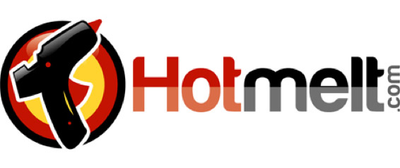Whether you’re a craftsperson by trade or a handy hobbyist, chances are that, at some point or another, you’ve had the chance—or soon will—to work with aluminum. Aluminum is absolutely pervasive, especially in industrial and commercial manufacturing and construction, because of its long list of desirable properties. It’s a relatively soft and malleable metal that is also lightweight, resistant to corrosion, conductive, reflective, and strong—and all at an affordable price point!
You’ll find aluminum used in everything from electrical conduits to airplane parts, to household goods and beyond. There are several varieties of aluminum, like the widely used anodized aluminum, and it is often alloyed with other substances like copper, magnesium, manganese, silicon, and zinc. Another reason aluminum is so widely used is that it’s pretty easy to bond—as long as you know what you’re doing. In this beginner’s guide, we’ll make sure you’re prepared to work with the quirks of an aluminum epoxy to create a reliable bond.
Special Considerations When It Comes to Aluminum and Epoxies
While you’ll often see aluminum being bonded by welding, with the right preparation an epoxy can provide a simpler alternative to create a bond that’s just as strong and long-lasting. However, there’s something special that every beginner must know before successfully bonding aluminum using an epoxy—aluminum readily reacts with oxygen to form a layer of aluminum oxide over its surface. And I’m sure that we don’t have to tell you that an additional layer over the surface of a substrate doesn’t typically make for a very strong bond.
In fact, oxidized aluminum may lose as much as half of its lap shear strength—which is how much force two substrates are able to withstand when pulled in opposite directions. In addition, aluminum can be affected by galvanic corrosion, which is a process in which one metal corrodes when it comes into electrical contact with another. This corrosion offers another opportunity for a layer of oxidation to form and weaken the bond, as well as its electrical conductivity.
Galvanic corrosion happens when aluminum and aluminum alloys are electrically connected to another metal with a large difference on the anodic index, such as the silver that can be found
in some electrically conductive adhesives (ECAs). In order to prevent galvanic corrosion and ensure a strong bond, you have to make sure your aluminum is electroplated with metal that won’t corrode like nickel or gold.

How to Prepare Aluminum for a Strong Epoxy Bond
In addition to preventing corrosion with electroplating, following these steps for careful surface preparation is the best way to ensure that your aluminum epoxy bond remains strong for years to come:
1. Clean and degrease the aluminum surface: Immerse, spray down, or wipe the aluminum or aluminum alloy surface with acetone, a lacquer thinner, ketone, mineral spirits, or another suitable solvent. In addition, you can also vapor degrease your aluminum with chlorinated solvent.
2. Use abrasion: Using gentle sandpaper or another abrasive, rough up the surface of the substrates to give the epoxy more opportunity to grip.
3. Etch the surface: After sanding, clean the surface a final time using an acid solution like sulfuric acid, sodium dichromate, or the more gentle but environmentally friendly citric acid.
4. Rinse: After a thorough rinse with deionized water, prepare and apply your epoxy according to the instructions for the best result!

Now that you’re ready to pull off one of your first aluminum epoxy projects, try Infinity Bond’s two-part, translucent MP 54125 epoxy with a work life of 25 minutes, a shear strength of 2,000 to 4,000 PSI, and a full cure time of 24 to 48 hours. Questions about using epoxy to bond aluminum or another metal for one of your projects? Get in touch with the Hotmelt team today. We’re here to help!

